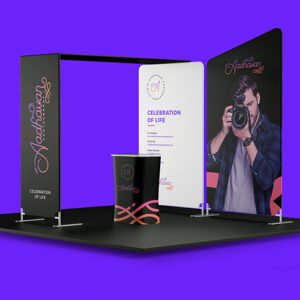Crafting engaging website designs involves creating user-friendly layouts and navigation that provide a seamless and intuitive browsing experience. Here are some key considerations for designing user-friendly layouts and navigation:
Clear and Consistent Layout:
Use a clear and consistent layout throughout the website to provide a familiar structure for users. Place important elements such as the logo, navigation menu, and key content in consistent locations across pages. Consistency enhances usability and helps users navigate the website more easily.
Intuitive Navigation:
Design intuitive navigation menus that are easy to find and use. Use standard navigation conventions, such as a horizontal menu at the top or a hamburger menu for mobile devices. Make sure navigation labels are descriptive and clearly indicate the content within each section or page. Avoid complex or hidden navigation elements that may confuse users.
Responsive Design:
Ensure your website design is responsive and adapts to different screen sizes and devices. A responsive design provides an optimal viewing experience on desktops, laptops, tablets, and mobile devices. Elements should resize and reposition appropriately to maintain readability and usability across devices.
Focused and Scannable Content:
Organize content in a way that allows users to quickly scan and find the information they need. Use headings, subheadings, bullet points, and short paragraphs to break up content into digestible chunks. Highlight important information or calls-to-action to draw attention. The use of whitespace helps improve readability and visual clarity.
User-Friendly Forms:
Design forms that are user-friendly and easy to complete. Use logical and clear labels, provide clear instructions, and minimize the number of required fields. Include real-time validation and informative error messages to help users complete forms accurately and efficiently.
Clear Call-to-Action (CTA) Placement:
Place clear and visually prominent call-to-action buttons strategically throughout the website. CTAs prompt users to take desired actions, such as signing up, purchasing, or contacting you. Ensure that CTAs are easily visible and distinguishable from other elements on the page, using color contrast, size, and styling.
Visual Hierarchy:
Establish a clear visual hierarchy in your designs to guide viewers’ attention and communicate messages effectively. Emphasize important elements using size, color, contrast, and placement. Create a logical flow that guides the viewer’s eye through the design.
User Testing and Feedback:
Conduct user testing to gather feedback on the usability and effectiveness of your website design. Observing how users navigate and interact with your website can provide valuable insights into areas that need improvement. Pay attention to user feedback and make iterative design changes based on their needs and preferences.
Performance Optimization:
Optimize your website’s performance to ensure fast loading times. Users expect websites to load quickly, and slow-loading pages can lead to frustration and high bounce rates. Optimize image sizes, minify code, use caching techniques, and leverage content delivery networks (CDNs) to improve performance.
By incorporating these principles into your website design, you can create engaging and user-friendly layouts with intuitive navigation. Prioritizing usability and user experience helps ensure that visitors can easily navigate, find information, and engage with your website, resulting in a positive and satisfying browsing experience.








